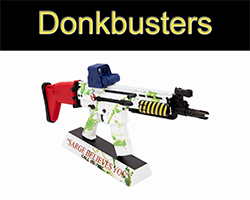FN SCAR
History of the FN SCAR
The Fabrique National Special Operations Forces Combat Assault Rifle, known as the FN SCAR, was designed by the Belgian company, FN Herstal to compete in a weapons trial in 2003 where the US Special Operations Command were looking for a potential replacement for the M4. Herstal designed two versions, the SCAR-L shooting 5.56 and the SCAR-H firing 7.62. During the trial FN was one of nine manufacturers that submitted options, but the only one that designed a new weapon to fit the requirements instead of just modifying an existing design.
In November 2004 it was announced the FN company was unanimously chosen as the winner of the trial and got the contract for both the 5.56 and 7.62 rifles. The Rifle began production in June 07, and was first fielded by the US Army's 75 Ranger Regiment in April 2009. In June 2010 SOCOM rejected the SCAR MK16 because of funding and only a marginal performance improvement over the M4, The MK17 SCAR-H however did remain in service.
The FN SCAR is a modular platform designed from scratch with the idea in mind that the modular system would provide the US Special forces with a wide variety of options that could be changed quickly in the field to suit their needs. They offer 10-, 13-, 14-, 16-, 18-, and 20-inch length barrel options with a quick detach system. The selector is ambidextrous, the charging handle can be easily swapped to the other side, and the ejection port has a deflector to keep spent brass out of the faces of left-handed operators.
The SCAR-L was designed with an improved AR style magazine but will work with existing AR style magazines. Equally the SCAR-H has its own magazine but will work with any AK, 7.62 style magazine, good for use against certain enemies. These guns also have a full-length top rail as well as rails on both sides and under the barrel for a wide variety of accessory options.
One Design feature of the SCAR is the short stroke gas piston system, unlike the direct impingement systems of the AR design that put the hot gases soot and carbon directly into the bolt chamber. On the scar the gases push a piston back to cycle the gun to the next round, then any excess gas is vented out the front of the gun keeping the chamber cleaner and cooler, increasing the device's reliability. The gas block also has a selector switch that will adjust the gas system for the use of a suppressor keeping the operation consistent.
Since its development, the SCAR has been used in police and military service in more than twenty countries. They have also released civilian versions that are only capable of firing in semi-automatic known as the SCAR-16S shooting 5.56 and the SCAR-17S in 7.62.
GoatGuns Models


.png)
.png)
